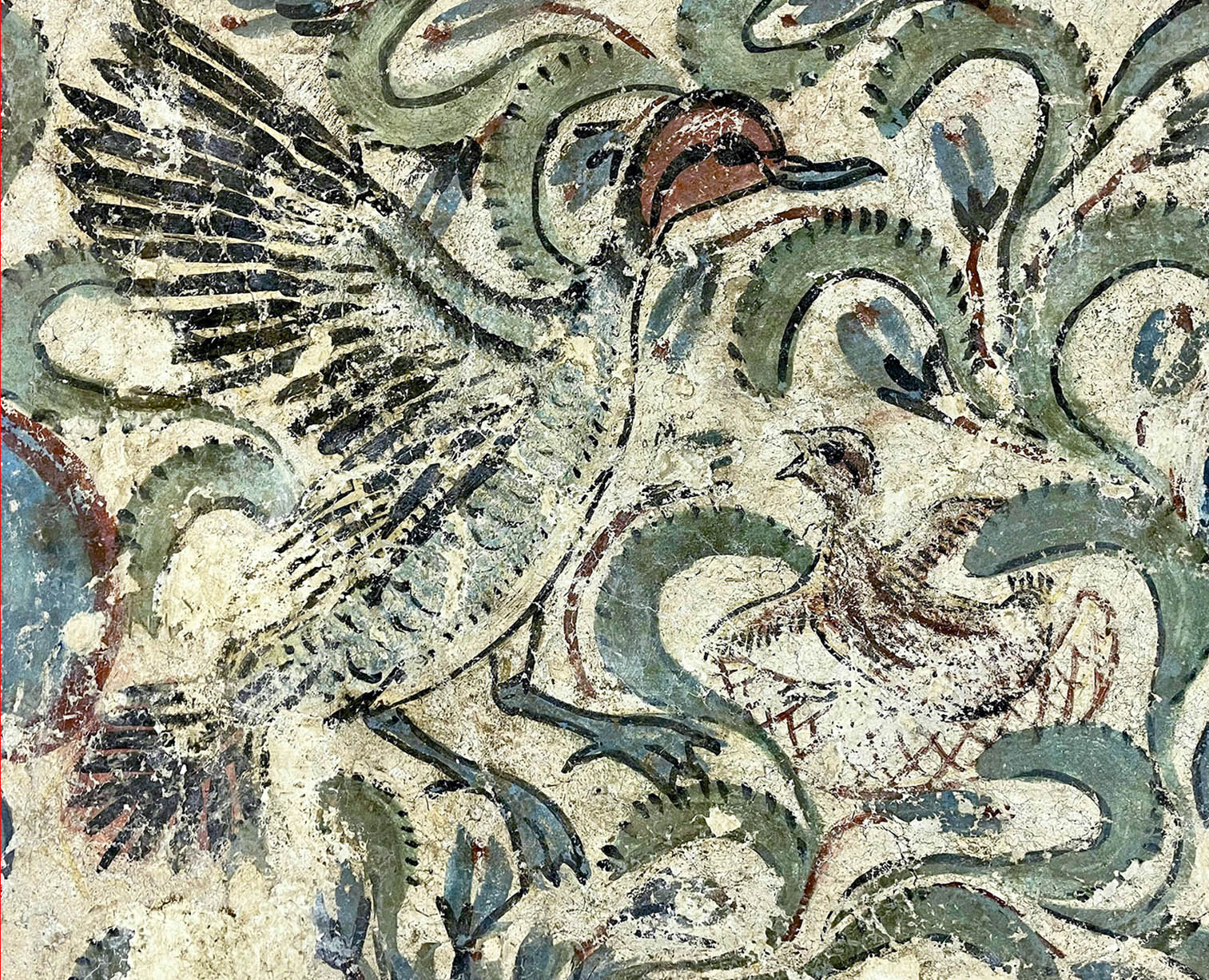Last week marked the opening of a new permanent display at the Egyptian Museum Cairo: the conserved wall, floor, and ceiling paintings from the Amenhotep III Painted Palace at Malqata. This multidisciplinary project, directed by Prof. Martina Ullmann of Ludwig Maximilians University in Munich, was carried out over two seasons. I led the conservation work in collaboration with colleagues from the Egyptian Museum Cairo. The project was generously funded by the American Research Center in Egypt’s Antiquities Endowment Fund.
These paintings were detached and excavated from the Palace in the late 19th and early 20th centuries, and for decades were exhibited in different parts of the Cairo museum. Their condition varied considerably, and many required critical conservation work to ensure their stability. All also required treatment to prepare them for redisplay, both as individual works and as a coherent group. Our project began in September 2023 with a comprehensive assessment of each piece, examining their surfaces, substrates, and their backing systems. This first season allowed us to establish conservation methodologies tailored to the specifics of the group.
The second season of conservation work focused on treatment itself: cleaning, stabilising, and consolidating the fragile surfaces and securing each painting on its backing and within its framing device.
The ultimate objective of the project was always to redisplay, enabling visitors to experience the Malqata paintings in a meaningful context. The newly created gallery space at the museum now places them opposite the Wadi es-Sebua paintings, which we had the privilege of conserving and preparing for display two years ago (see https://biancamadden.com/projects/conservation-and-research-historically-transferred-wadi-es-sebua-temple-wall-paintings/). Seen together, the two groups of paintings highlight the richness and diversity of ancient Egyptian wall painting traditions, illustrating the breadth of painting traditions from a temple to a royal palace setting from the same period.
We are delighted that these works of art are now permanently conserved and on display, where they can be appreciated as part of Egypt’s extraordinary cultural legacy.
An article about the project can be found here: https://www.lmu.de/de/newsroom/newsuebersicht/news/vogelnester-fuer-den-pharao.html on the website of the Ludwig Maximilians University, and another is here https://www.aegyptologie.uni-muenchen.de/forschung/projekte/malqata/index.html, which has details and images of the display.
